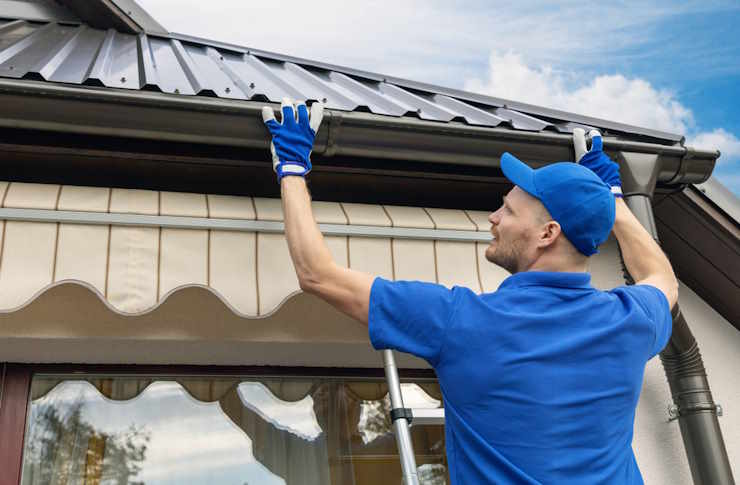The Complete Guide to Government Roofing Grants for Seniors
For many seniors living on fixed incomes, maintaining a home—particularly the roof—can become financially overwhelming. A damaged roof threatens not only property value but also safety and health. Fortunately, various government programs offer grants specifically designed to help older Americans afford necessary roofing repairs and replacements. These financial assistance options can be life-changing, but navigating the application process requires understanding the available programs and their requirements.

How Seniors Can Access Government Grants for Roofing Repairs
The federal government, along with state and local agencies, provides several grant programs designed to assist seniors with home repairs, including roofing. The most prominent federal programs include:
-
Section 504 Home Repair Program: Offered through the U.S. Department of Agriculture (USDA), this program provides grants up to $10,000 to elderly homeowners who cannot repay a loan. Applicants must be 62 or older and have income below 50% of the area median.
-
Weatherization Assistance Program (WAP): Administered by the Department of Energy, WAP helps low-income households, with priority given to seniors, reduce energy costs through various improvements, including roof repairs when they affect energy efficiency.
-
Community Development Block Grant (CDBG): These funds flow from the Department of Housing and Urban Development to local communities, which often use them to create senior home repair programs that may cover roofing.
-
Area Agencies on Aging: These local organizations frequently administer programs specifically designed to help seniors remain in their homes, sometimes including roofing assistance.
The key to accessing these programs is contacting your local housing authority, Area Agency on Aging, or USDA Rural Development office to determine which programs are available in your community and how to apply.
What You Need to Know Before You Apply to Government Roofing Grants for Seniors
Before beginning any application process, seniors should understand several important factors that may affect eligibility and success:
Income requirements: Most programs have strict income guidelines, typically requiring applicants to fall below 50-80% of the area median income. Be prepared to provide detailed financial documentation, including tax returns, bank statements, and proof of all income sources.
Homeownership verification: You’ll need to prove that you own the home and that it’s your primary residence. This typically requires a deed or mortgage statement.
Age verification: Programs specifically for seniors usually require applicants to be at least 62 years old, though some local programs may use different age thresholds.
Home condition assessment: Most programs will send an inspector to evaluate your roof’s condition and determine if the repairs qualify under program guidelines. Some programs only address safety hazards or energy efficiency issues rather than cosmetic concerns.
Waiting periods: Due to high demand and limited funding, many programs have waiting lists. Don’t wait until your roof is severely damaged to begin the application process.
Rural vs. urban availability: Some programs, like the USDA Section 504, are specifically designed for rural areas, while others may be exclusively for urban communities.
How to Apply for Government Roofing Grants for Seniors
The application process varies by program, but generally follows these steps:
-
Initial contact: Reach out to the administering agency by phone or visit their office. For USDA programs, contact your local Rural Development office; for HUD programs, contact your local housing authority or community development office.
-
Pre-screening: Many programs conduct an initial eligibility screening by phone or through a simple form to determine if you meet basic requirements before proceeding with the full application.
-
Application completion: If pre-screened successfully, you’ll receive a comprehensive application requiring detailed information about your finances, household composition, and property. Many agencies offer assistance in completing these forms.
-
Documentation submission: Gather and submit all required documents, which typically include:
-
Proof of identity (driver’s license or ID card)
-
Proof of age (birth certificate)
-
Proof of income (tax returns, Social Security award letters)
-
Proof of homeownership (deed)
-
Proof of homeowner’s insurance
-
Recent utility bills
-
-
Home inspection: If your application moves forward, the agency will schedule an inspection to assess your roof’s condition and document the need for repairs.
-
Approval and contractor selection: Upon approval, many programs will either assign a contractor or provide a list of approved contractors from which you can choose.
-
Work completion and inspection: After repairs are completed, a final inspection ensures the work meets program standards before payment is issued directly to the contractor.
A Step-by-Step to Government Roofing Grants for Seniors
To maximize your chances of securing roofing assistance, follow these strategic steps:
-
Start with a comprehensive assessment: Have a trusted roofer document all issues with your current roof. This documentation can strengthen your application.
-
Research all available programs: Don’t limit yourself to one program. Apply for multiple assistance options simultaneously, as some have complementary benefits.
-
Contact your utility companies: Some offer weatherization programs that include roof repairs affecting energy efficiency.
-
Reach out to nonprofit organizations: Groups like Habitat for Humanity, Rebuilding Together, and religious organizations sometimes offer roof repair assistance for seniors.
-
Prepare for potential partial funding: Many programs may not cover the entire cost of a roof replacement. Consider how you might cover any gaps through personal savings, family assistance, or low-interest loans specifically for seniors.
-
Understand timeframes: Government programs often work slowly. If your roof needs immediate attention, mention this in your application and consider emergency solutions while waiting for grant approval.
-
Seek application assistance: Many senior centers and Area Agencies on Aging offer free help with completing complex government applications.
Government Roofing Grant Programs Comparison
| Program Name | Administering Agency | Maximum Grant Amount | Age Requirement | Income Requirement | Coverage |
|---|---|---|---|---|---|
| Section 504 Home Repair Program | USDA | $10,000 | 62+ | Below 50% of area median income | Full or partial roof repair/replacement |
| Weatherization Assistance Program | DOE | Varies by state (avg. $3,000) | No age requirement (priority to seniors) | Below 200% of poverty level | Roof repairs affecting energy efficiency |
| Community Development Block Grants | HUD/Local government | Varies by community | Varies by local program | Usually below 80% of area median income | Often covers complete roof replacement |
| Low-Income Home Energy Assistance Program | HHS | Varies by state | No age requirement (priority to seniors) | Below 150% of poverty level | Repairs related to heating/cooling efficiency |
| Area Agency on Aging Programs | Local AAAs | Varies by program | Usually 60+ | Varies by program | Often partial funding for urgent repairs |
Prices, rates, or cost estimates mentioned in this article are based on the latest available information but may change over time. Independent research is advised before making financial decisions.
Securing government assistance for roofing repairs requires patience, persistence, and thorough preparation. While the application process may seem daunting, the financial relief these programs provide can be substantial. By understanding the requirements, gathering documentation early, and exploring multiple assistance options, seniors can significantly improve their chances of receiving the help they need to maintain a safe, secure home. Remember that local resources, such as senior centers and community action agencies, can provide invaluable guidance through the application process and may know of additional programs not widely advertised.




